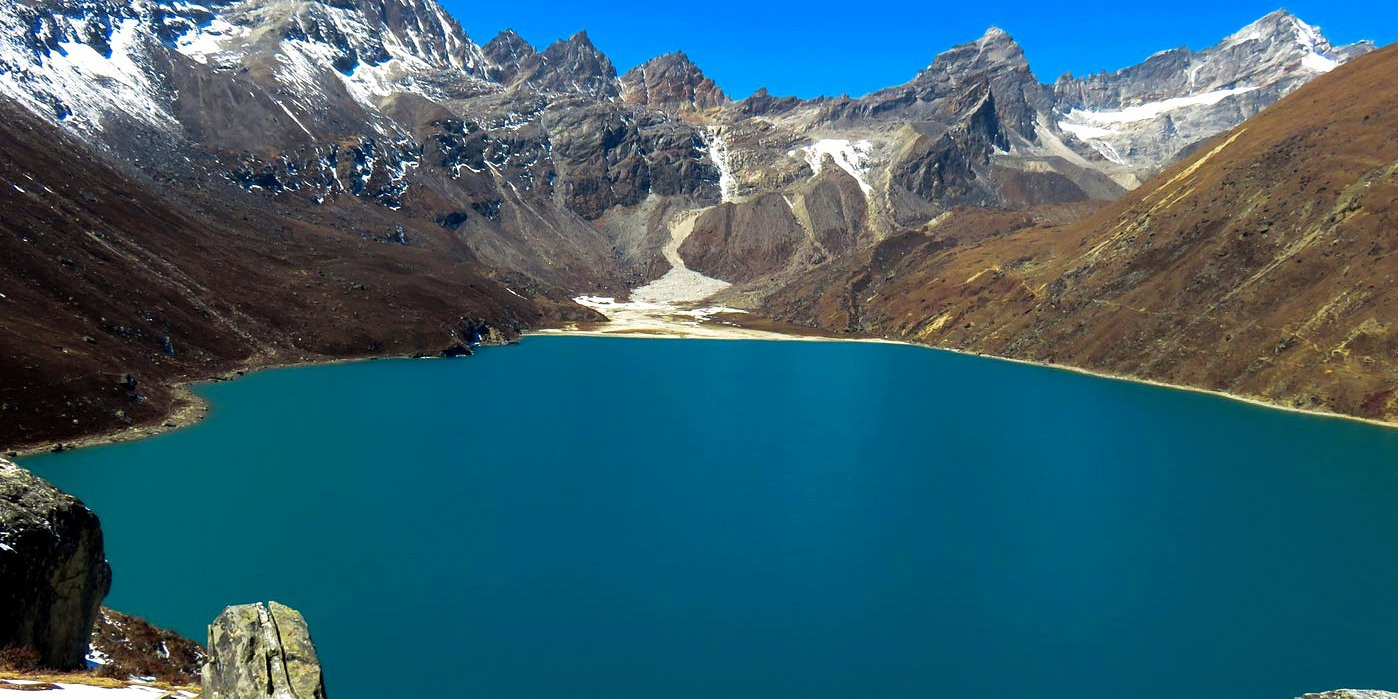Phewa Lake, Pokhara
Phewa Lake in Pokhara is one of Nepal's most iconic and visited lakes, offering both natural beauty and a wealth of activities for visitors. As the second-largest lake in Nepal, it serves as a focal point for tourists in the Pokhara Valley, known for its stunning reflections of the Annapurna range and the lush hills surrounding its waters.
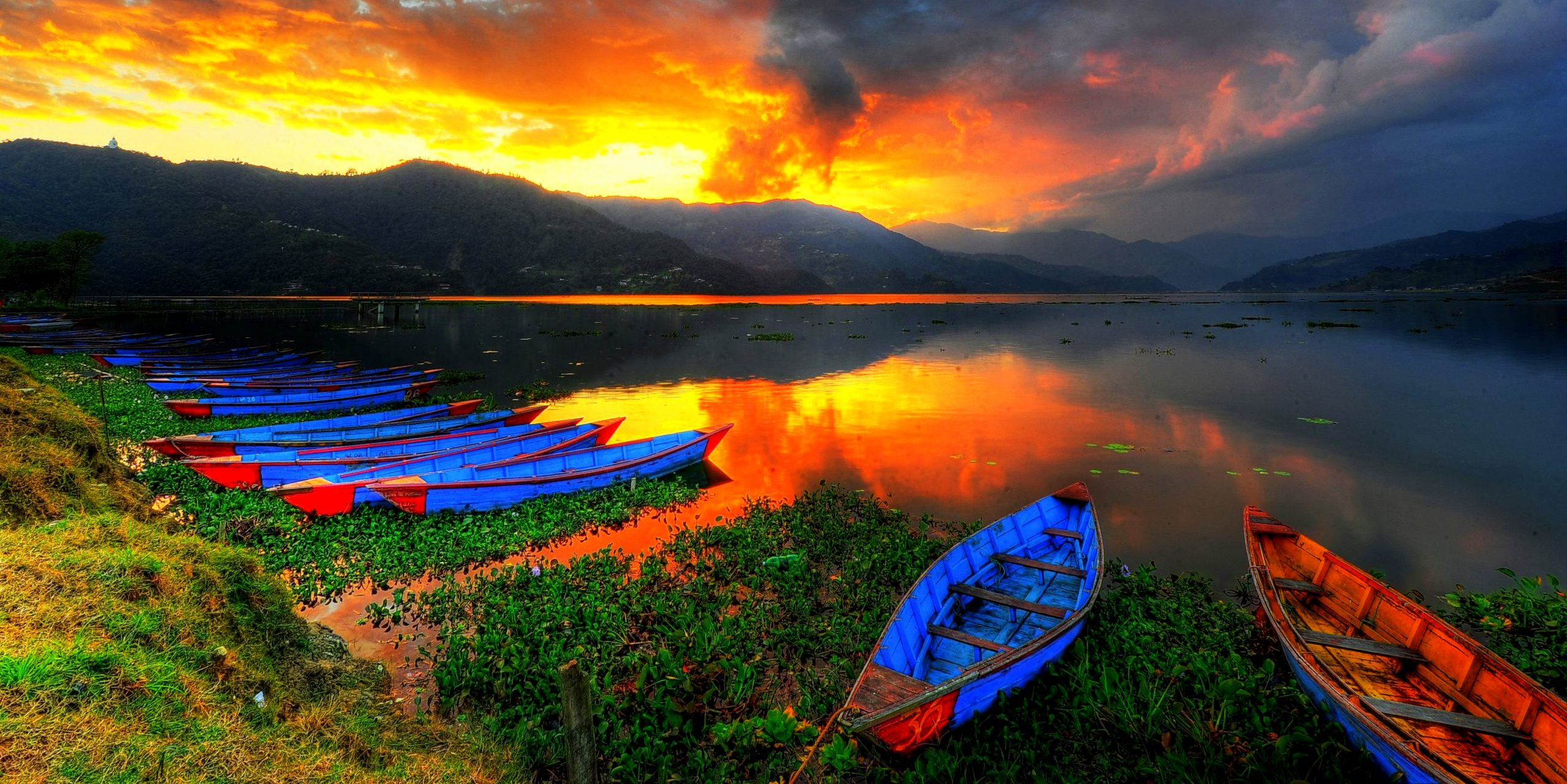
Key Features
-
Scenic Beauty: The lake is famous for its serene waters and the picturesque views of the Himalayas, especially the majestic Machhapuchhre (Fishtail) mountain, which seems to rise directly from the lake's surface.
-
Tal Barahi Temple: Located on an island in the middle of the lake, this two-story pagoda is dedicated to the Hindu god Vishnu and can be reached by a short boat ride.
-
Boating and Recreation: Phewa Lake is a hub for leisure with options for rowing, paddle boating, and sailing. It's an ideal way to spend a relaxing day on the water, soaking in the panoramic views and the tranquil atmosphere.
-
Lakeside Promenade: The eastern shore of Phewa Lake, commonly referred to as Lakeside, is lined with hotels, restaurants, shops, and bustling cafes that cater to all the needs of international and local visitors.
Activities
-
Boating and Kayaking: Explore the lake on a rented boat or kayak, a perfect activity for families and couples seeking a peaceful escape.
-
Paragliding: For the more adventurous, paragliding offers a thrilling aerial view of the lake and its surroundings, launching from nearby Sarangkot.
-
Hiking and Cycling: Numerous trails around the lake provide hiking and mountain biking opportunities, offering a more active way to enjoy the area's natural beauty.
-
Photography and Bird Watching: The lake's natural setting makes it a great spot for photography enthusiasts and bird watchers, with many species visible around the water and nearby forests.
Cultural Significance: Phewa Lake is not only a natural asset but also a cultural centerpiece in Pokhara. The lake and its island temple are integral to local religious practices and festivals, particularly during the Haribodhini Ekadashi when a large number of pilgrims visit Tal Barahi Temple.
Phewa Lake offers a blend of tranquility, adventure, and cultural richness, making it a must-visit destination for anyone traveling to Nepal. Its easy accessibility from Pokhara and the variety of activities available make it perfect for both short visits and longer stays.
Rara Lake
Rara Lake is Nepal's largest lake and sits at the heart of Rara National Park in the remote northwestern part of the country. Known as the "Queen of Lakes," Rara's pristine azure waters and the stunning natural scenery around it make this destination a hidden gem for those willing to venture off the beaten path.
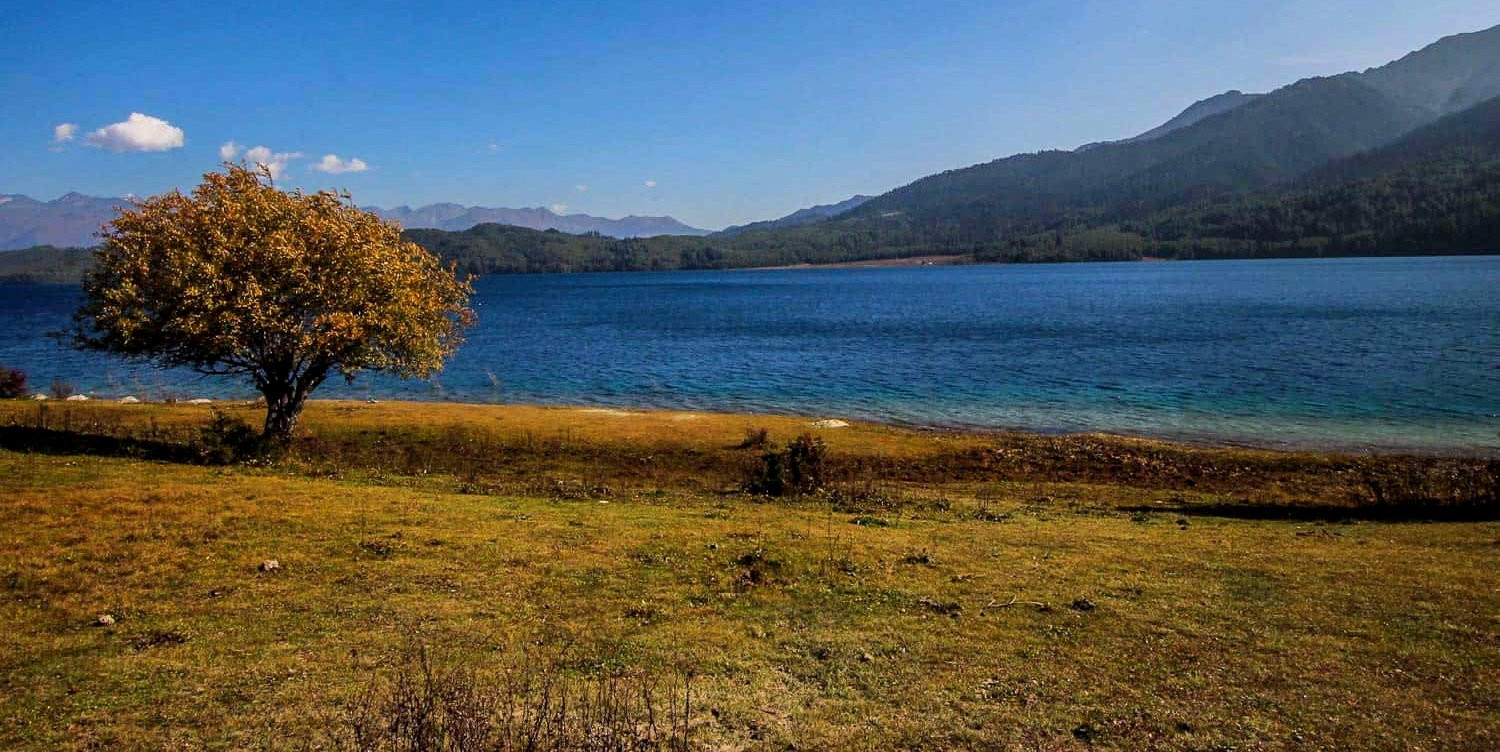
Key Features
-
Size and Location: Rara Lake covers an area of 10.8 square kilometers at an altitude of about 2,990 meters above sea level. The lake is surrounded by alpine conifer forests and offers spectacular views of snow-capped Himalayan peaks.
-
Biodiversity: Rara National Park, which surrounds the lake, is a haven for wildlife, including the endangered red panda and the Himalayan black bear. The park is also home to a variety of bird species, making it a popular spot for bird watchers.
Activities
-
Trekking: Reaching Rara Lake involves a trek through remote mountain paths, offering a more secluded and adventurous experience compared to Nepal's more popular trekking routes. The journey rewards trekkers with breathtaking landscapes and a closer look at the local culture of the Mugu and Jumla regions.
-
Boating and Kayaking: Although more restricted to preserve the area's ecological balance, boating on Rara Lake offers a tranquil way to enjoy its beauty.
-
Photography: The clear waters and surrounding landscapes provide perfect opportunities for photography, especially during the early morning when the mist lifts off the lake’s surface.
Cultural Significance: Rara Lake is not only a natural wonder but also holds cultural importance for the local communities. The lake is considered a sacred place by many, and locals celebrate festivals such as Teej and Dashain on its shores.
Accessibility: Getting to Rara Lake is challenging due to its remote location. The most common routes involve a flight from Kathmandu to Nepalgunj, followed by another flight to either Mugu or Jumla. From there, visitors trek for several days through remote areas, making the journey to Rara Lake an adventure in itself.
Conservation: As a protected area, Rara National Park has strict regulations to maintain its pristine condition. Efforts are continually made to minimize the impact of tourism on the natural environment, preserving the beauty and ecological balance of the lake and its surroundings.
Rara Lake's extraordinary beauty and serene environment make it a perfect destination for those looking to escape the crowds and experience the untouched wilderness of Nepal. Its seclusion and the commitment required to reach it only add to its allure, making a visit to Rara Lake a truly unique and rewarding adventure.
Begnas Lake
Begnas Lake is the second-largest lake in the Pokhara Valley and a quieter counterpart to the more bustling Phewa Lake. Located just southeast of Pokhara, it offers a tranquil escape and is revered for its clear waters and the lush, green surroundings that make it a perfect retreat for nature lovers and those seeking peace and quiet.
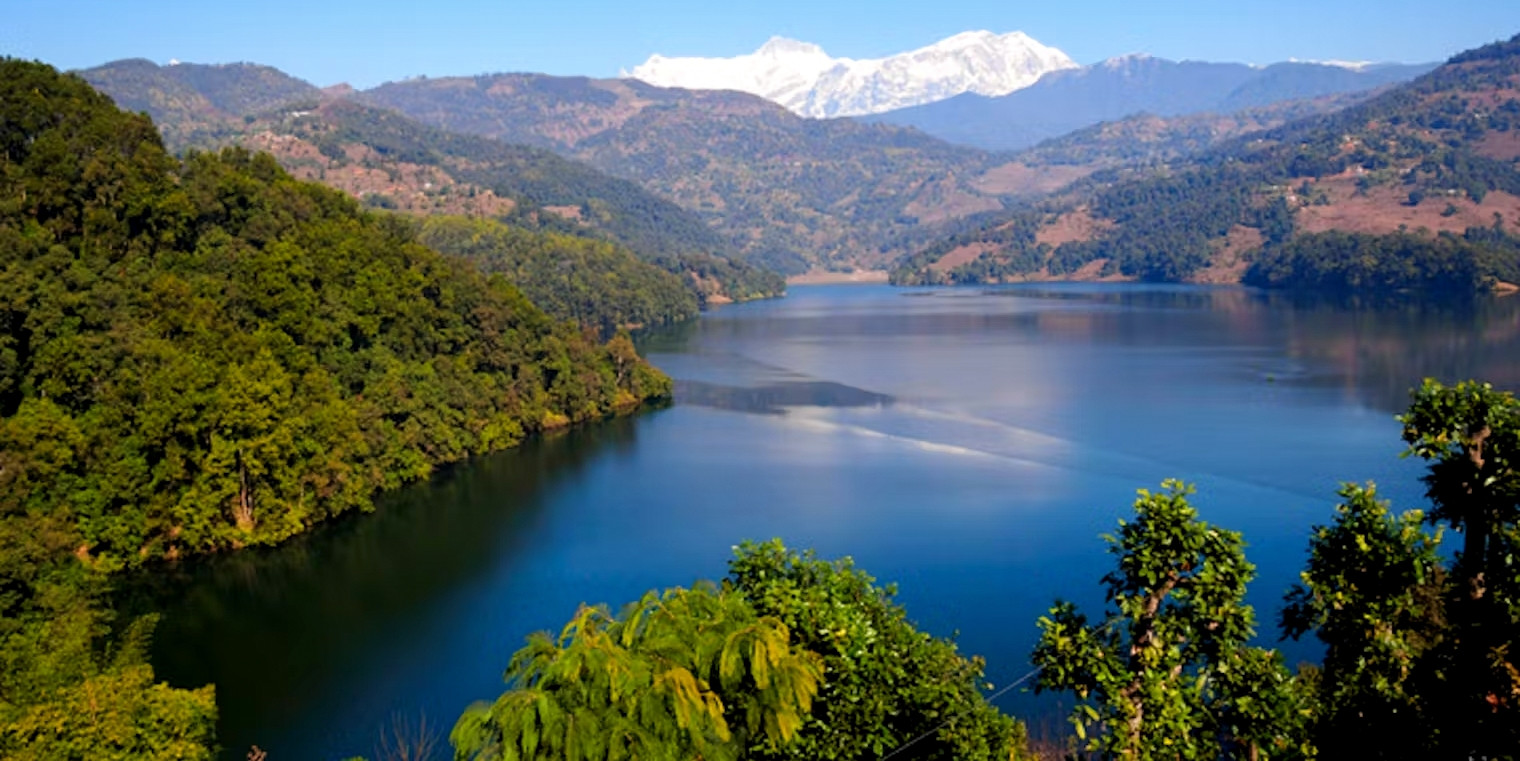
Key Features
-
Natural Setting: Nestled amidst the foothills of the Himalayas, Begnas Lake provides a more secluded environment compared to Phewa Lake. The lake is flanked by terraced rice fields, forested hills, and views of the majestic Annapurna range, offering a picturesque landscape that captivates visitors.
-
Ecosystem: The lake supports a rich biodiversity, including a variety of fish species, making it a popular spot for fishing in Begnas. It also attracts numerous migratory birds, which enhances its appeal to bird watchers.
Activities
-
Boating: Rowboats and paddle boats are available for hire, allowing visitors to explore the quiet waters at their own pace.
-
Fishing: The lake is known for its good fishing, particularly for carp and catfish, providing both a recreational activity for tourists and a livelihood for local fishermen.
-
Hiking: Several trails around the lake offer opportunities for short hikes, which lead to excellent vantage points for panoramic views of the lake and its surroundings.
-
Yoga and Meditation: The serene environment of Begnas Lake makes it an ideal location for yoga and meditation retreats, attracting those looking to rejuvenate mind and body.
Accommodations: Begnas Lake Resorts: The area around the lake features a range of accommodations from luxury resorts to modest guesthouses, all offering peaceful lake views and hospitality that highlights the local culture and cuisine.
Accessibility: Begnas Lake is easily accessible by road from Pokhara, making it a convenient day trip or a relaxing multi-day retreat. The proximity to Pokhara also allows visitors to combine their lake visits with other regional attractions, including treks and cultural tours.
Conservation Efforts: Efforts are continuously made by local communities and conservation organizations to preserve the natural beauty and ecological balance of Begnas Lake. Initiatives include regulating fishing practices and promoting sustainable tourism practices to minimize environmental impact.
Begnas Lake's serene atmosphere and natural beauty make it an ideal spot for those looking to escape the more touristy areas of Nepal. Its accessibility, coupled with the peaceful natural surroundings and the variety of activities available, ensures that visitors can enjoy a relaxed and refreshing experience in close contact with nature.
Gosaikunda Lake
Gosaikunda Lake is a high-altitude lake located in the Langtang National Park in the Rasuwa District of Nepal. Renowned for its spiritual significance and dramatic natural beauty, it attracts thousands of pilgrims and trekkers each year. Situated at an altitude of about 4,380 meters (14,370 feet), Gosaikunda offers a serene and mystical setting, surrounded by high mountains and rugged terrain.
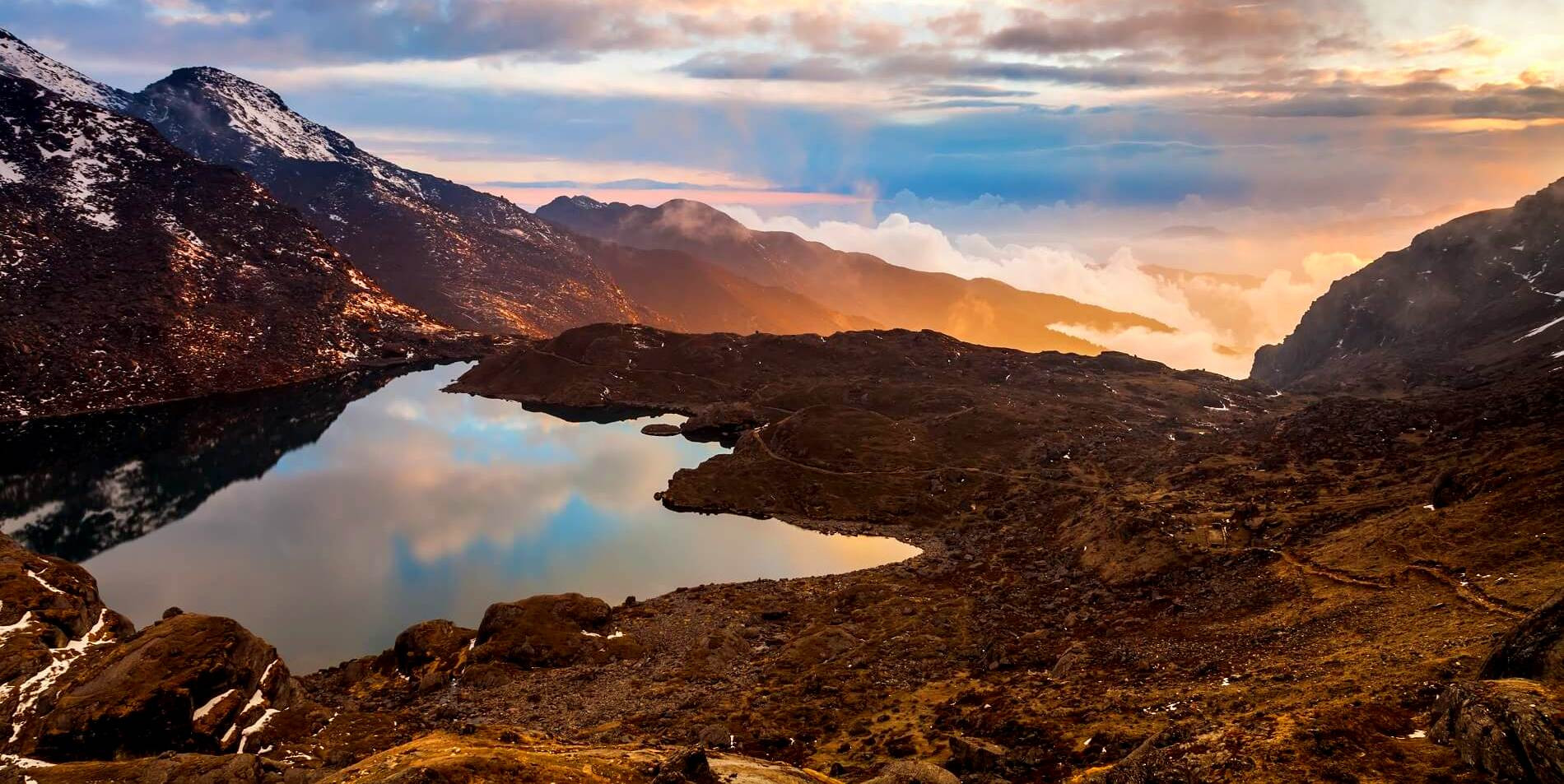
Key Features
-
Spiritual Significance: Gosaikunda is considered a sacred site in Hindu mythology, believed to have been created by Lord Shiva when he thrust his trident into a mountain to draw water and cool his stinging throat after swallowing poison. The lake is a major pilgrimage destination during the Janai Purnima festival in August when hundreds of Hindu pilgrims visit to bathe in its holy waters.
-
Natural Beauty: The lake is set in a stunning landscape of the Himalayas with crystalline waters that reflect the sky and surrounding peaks. It's part of a lake complex that includes more than a dozen other lakes, offering spectacular views and a tranquil environment.
Activities
-
Trekking: The trek to Gosaikunda is one of the most popular in Nepal, known for its accessibility and moderate difficulty. The Gosaikunda trek offers a combination of cultural insights and natural beauty, passing through lush forests and traditional Tamang villages.
-
Pilgrimage: During the Gosaikunda festival dates, the trail and the lake itself become bustling with activity as devotees from various parts of Nepal and India visit for religious ceremonies.
-
Photography: The pristine environment and the dramatic contrast between the sky, water, and mountains make Gosaikunda a photographer’s paradise.
Accessibility: The journey to Gosaikunda starts with a drive from Kathmandu to Dhunche or Syabrubesi, followed by a trek that typically lasts about 5-7 days depending on the chosen itinerary and pace. The trek is challenging due to its high altitude but is manageable with proper acclimatization.
Conservation: Gosaikunda lies within the Langtang National Park, which helps protect its environment and maintain the ecological balance. Conservation efforts are crucial in this region to preserve its unique biodiversity and the pristine quality of the lake and its surroundings.
Cultural and Ecological Importance: As a protected area, Gosaikunda plays a vital role in the local ecosystem, supporting diverse flora and fauna. Additionally, the lake holds great cultural and religious importance, embodying the intricate relationship between nature and spirituality in Nepalese culture.
Gosaikunda Lake is not only a destination for spiritual solace but also a testament to the natural beauty and cultural richness of Nepal. Its remote location and high altitude make it a rewarding challenge for trekkers and a peaceful retreat for those seeking reflection and rejuvenation in the mountains.
Tilicho Lake
Tilicho Lake is recognized as one of the highest lakes in the world, situated at an altitude of about 4,949 meters (16,237 feet) in the Annapurna region of the Nepalese Himalayas. This stunning lake draws trekkers from around the globe who are on the Annapurna Circuit, providing a challenging detour known for its breathtaking scenery and rugged terrain.
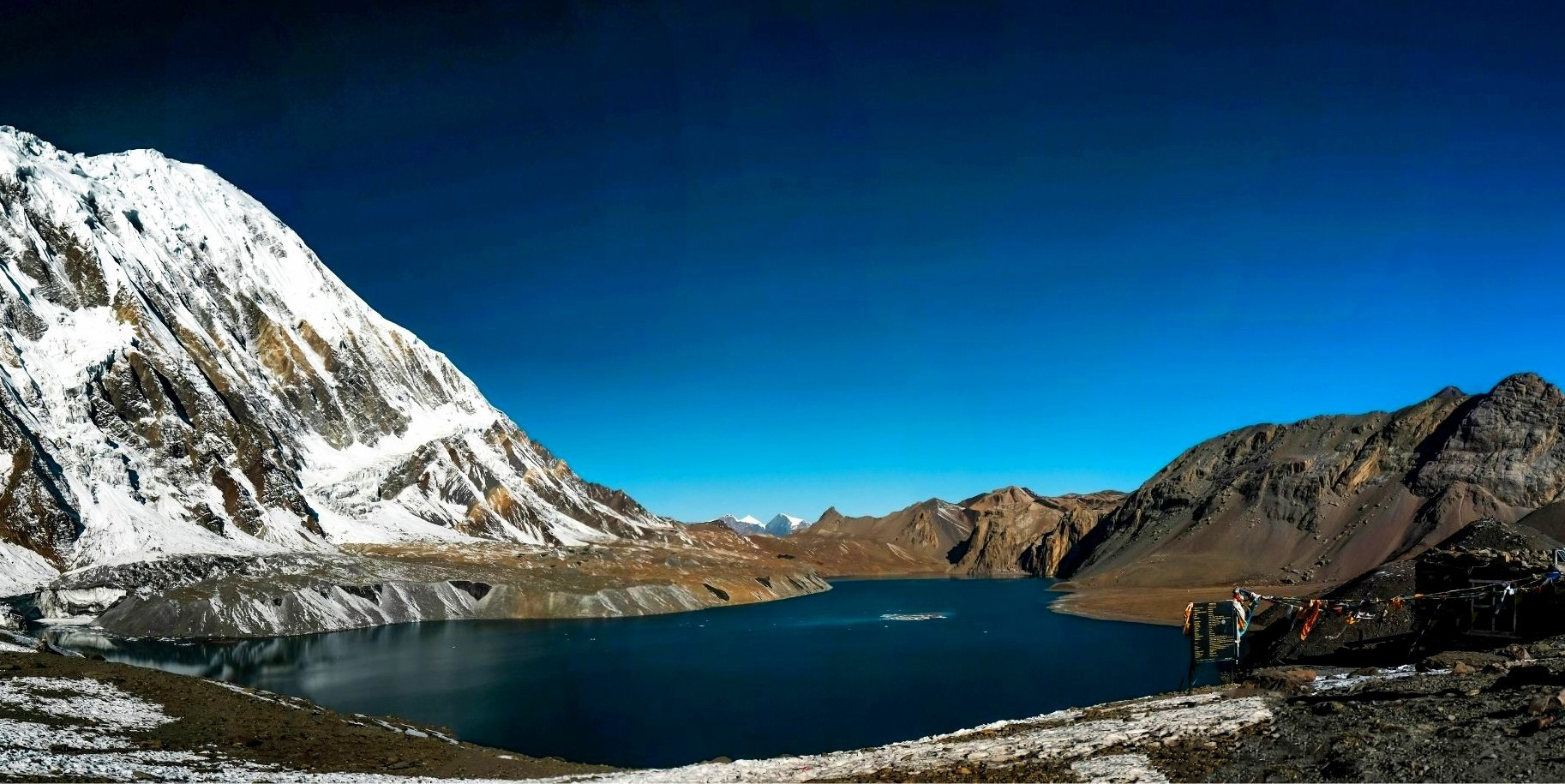
Key Features
-
High Altitude: Situated high in the Himalayas, Tilicho Lake offers an environment like no other, with its crisp, thin air and the stark beauty of its alpine surroundings.
-
Striking Beauty: The lake is known for its vivid blue waters, which starkly contrast with the arid, rocky landscape around it. On clear days, the surrounding snow-capped peaks and blue sky reflect on its glassy surface, creating stunning vistas.
-
Geographical Significance: The lake collects the glacial melt of the entire northern slopes of Annapurna and Thorong Peak, making it a significant geographical feature in the region.
Activities
-
Trekking: The trek to Tilicho Lake is an extension of the Annapurna Circuit and is considered one of the more challenging parts due to the high altitude and steep, rocky paths. The Tilicho trek route is well-traveled by those who are acclimatized and seek the thrill of a high-altitude trek.
-
Photography: The unique landscape and natural beauty of Tilicho Lake make it a powerful destination for photographers looking to capture the raw, untamed beauty of the Himalayas.
-
Exploration: For adventure seekers, the area around Tilicho Lake offers numerous opportunities for further exploration, including crossing the challenging Mesokanto La pass.
Accessibility: Reaching Tilicho Lake involves a trek that generally starts from Manang, a village on the Annapurna Circuit. From Manang, it takes about 3 days to hike to the lake, involving overnight stops at intermediate sites like Tilicho Base Camp. The trek requires good physical fitness and proper acclimatization due to the high altitude.
Climate: The Tilicho Lake weather can be extremely variable, with conditions changing rapidly. Mornings typically offer clearer skies and calmer winds, while afternoons can bring cloud cover and gusts, affecting visibility and temperature drastically.
Conservation: Being part of the Annapurna Conservation Area, efforts to preserve the natural environment around Tilicho Lake are vital. The area is sensitive to changes in climate and human impact, so sustainable tourism practices are encouraged to minimize environmental footprints.
Tilicho Lake is more than just a trekking destination; it is a testament to the majestic and often humbling power of nature. The journey to the lake is as rewarding as it is revealing, providing trekkers with unparalleled views of the Himalayas and a deep sense of accomplishment. For those prepared for its challenges, Tilicho Lake offers one of the most unforgettable experiences in Nepal's vast wilderness.
Shey Phoksundo Lake
Shey Phoksundo Lake is a stunning alpine water body located in the Dolpa District of Nepal, renowned for its breathtaking turquoise color and scenic beauty. It is the deepest lake in Nepal and lies within the Shey Phoksundo National Park, making it a crucial part of one of the country's most remote and ecologically diverse regions.
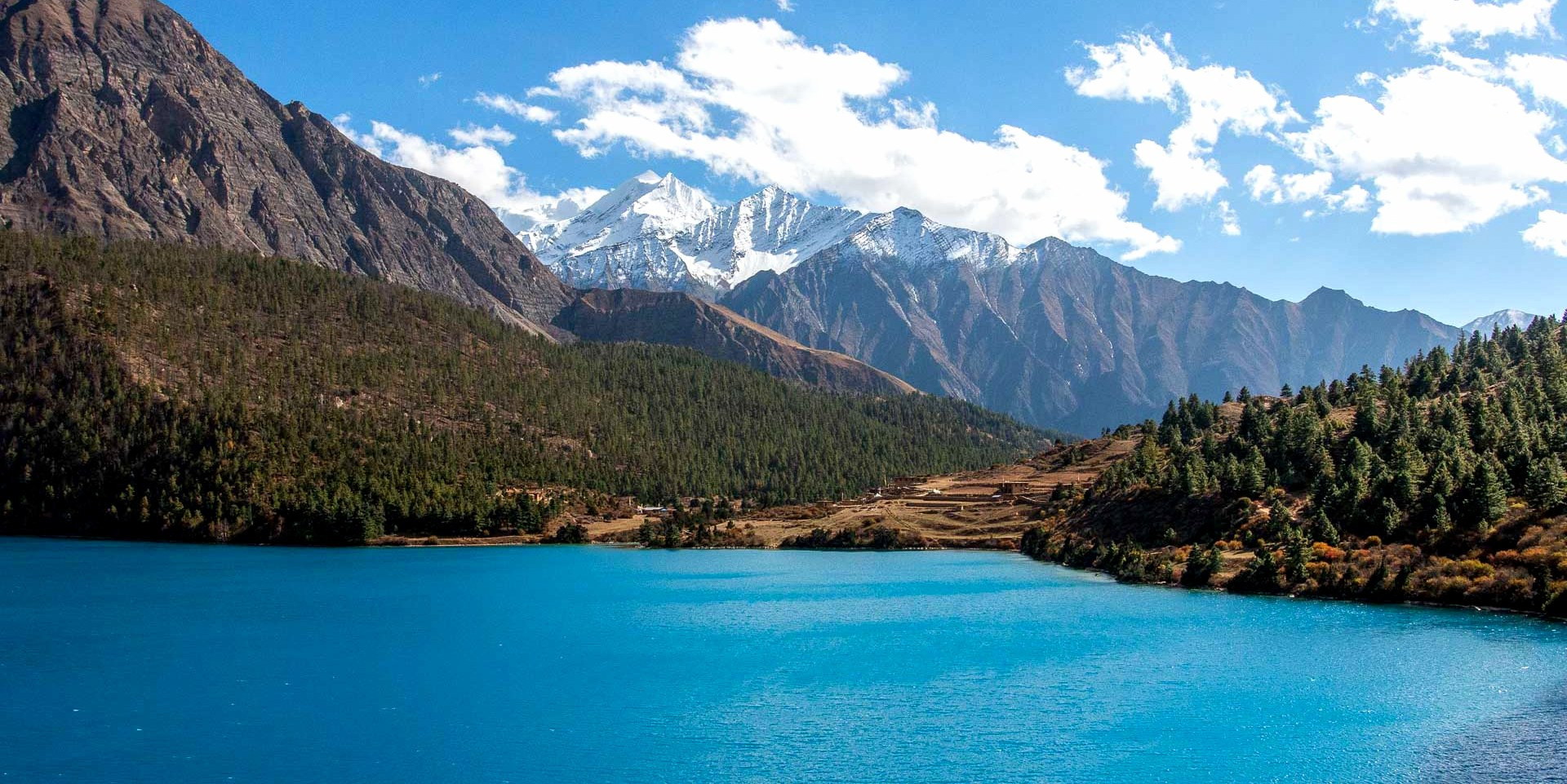
Key Features
-
Natural Beauty: Shey Phoksundo Lake is known for its deep blue and emerald colors, which stand out vividly against the stark, rocky backdrop of the surrounding mountains. The lake's color is due to its glacial melt origin, which carries finely ground rock into the lake.
-
Cultural Significance: The area around Shey Phoksundo Lake is rich in Tibetan Buddhist and Bon Po cultures, making it a fascinating destination for cultural enthusiasts. Several gompas (monasteries) and traditional villages lie near the lake, adding to its mystical appeal.
-
Biodiversity: Shey Phoksundo National Park, home to the lake, features a variety of flora and fauna, including some species that are unique to the region. The park is a habitat for endangered species like the snow leopard and the blue sheep.
Activities
-
Trekking: The Shey Phoksundo trek is one of the main attractions in the region. This trek offers a mix of natural and cultural exploration, passing through remote villages, ancient monasteries, and stunning landscapes.
-
Photography: The sheer beauty of the lake, combined with the unique cultural landmarks, provides ample opportunities for photography enthusiasts to capture captivating images.
-
Exploration: Visitors can explore the park’s diverse ecosystems and perhaps visit local villages to learn about the lifestyles and traditions of the Dolpa people.
Accessibility: Reaching Shey Phoksundo Lake involves a journey into one of the most isolated parts of Nepal. Trekkers typically fly from Kathmandu to Nepalgunj, then to Juphal, followed by several days of trekking through rugged terrain. The remoteness of the region adds to the adventure and allure of visiting this pristine lake.
Conservation: The lake and its surroundings are protected under the regulations of Shey Phoksundo National Park, which helps preserve the area's natural beauty and ecological balance. Conservation efforts focus on protecting local wildlife and promoting sustainable tourism practices that minimize environmental impact.
Cultural and Ecological Importance: Shey Phoksundo Lake is not just a natural wonder but also a vital part of the local cultural heritage. The lake and its surrounding areas are considered sacred by the local Bon religion, and many pilgrims visit the lake for spiritual reasons. The ecological diversity of the region also makes it a valuable site for scientific research and conservation.
Shey Phoksundo Lake offers a truly remote wilderness experience, combining stunning natural beauty with rich cultural heritage. Its isolation ensures that it remains one of the most pristine and untouched natural areas in Nepal, making it a must-visit for those who seek a deeper connection with nature and culture away from the more trodden paths.
Gokyo Lakes
Gokyo Lakes are a series of six spectacular high-altitude lakes in the Everest region of Nepal, forming the highest freshwater lake system in the world. Situated at altitudes between 4,700 to 5,000 meters (15,400 to 16,400 feet), these lakes are a major attraction for trekkers traveling through the Khumbu region, particularly those on the Gokyo Ri trek.
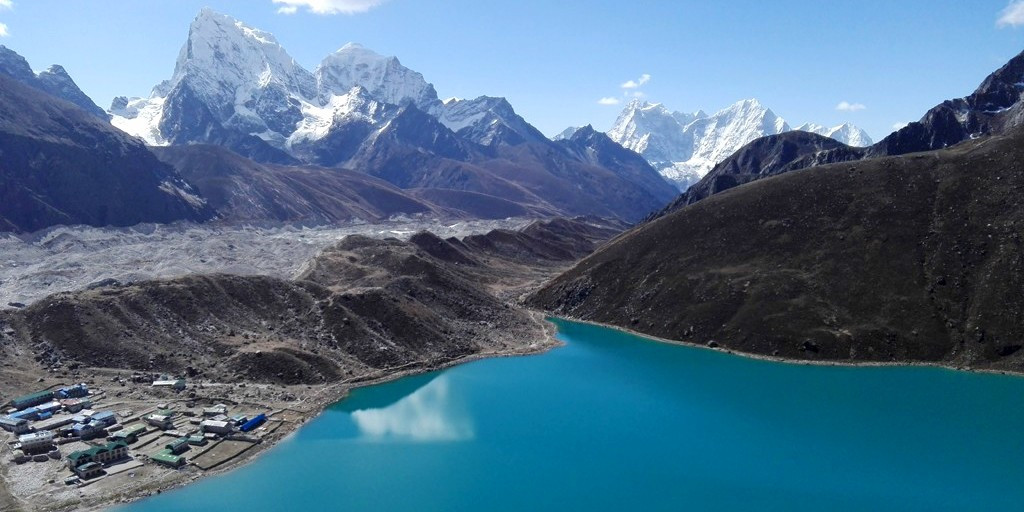
Key Features
-
Stunning Vistas: The Gokyo Lakes are renowned for their breathtaking beauty, with vibrant blue and green waters that mirror the snowy Himalayan peaks above. The largest of these, Thonak Lake, offers some of the most striking views.
-
Gokyo Ri: One of the main highlights for visitors to the Gokyo Lakes is the ascent of Gokyo Ri (5,357 meters), a peak that provides one of the best panoramic views of Everest, Lhotse, Makalu, and Cho Oyu.
-
Rich Biodiversity: The region around the Gokyo Lakes is noted for its rich biodiversity, including a variety of flora and fauna unique to the high-altitude terrain.
Activities
-
Trekking: The route to Gokyo Lakes is considered one of the most beautiful trekking paths in the Everest region, with less foot traffic compared to the Everest Base Camp trek. The journey includes crossing the Ngozumpa Glacier, the longest glacier in the Himalayas.
-
Photography: The incredible scenery of the Gokyo Lakes, coupled with the dramatic backdrop of the Himalayan giants, makes this area a paradise for photographers, especially during sunrise and sunset when the light transforms the landscape.
-
Acclimatization and Exploration: Many trekkers use the Gokyo Lakes area as a place to acclimatize before continuing on to higher altitudes. The lakes themselves provide excellent day hikes, offering opportunities to explore more of the area’s natural beauty.
Accessibility: Access to the Gokyo Lakes typically involves a flight from Kathmandu to Lukla, followed by several days of trekking through the Khumbu region. The trek can be challenging due to the altitude and rugged terrain, but the paths are well-maintained, and the gradual ascent helps with acclimatization.
Conservation: The Gokyo Lakes region is part of the Sagarmatha National Park, a UNESCO World Heritage site. Conservation efforts are critical in this area to protect the fragile ecosystems and ensure that tourism has a minimal environmental impact. Practices such as proper waste management and respect for local guidelines are essential for preserving this unique landscape.
Cultural and Ecological Importance: The Gokyo Lakes hold great religious significance to both Hindus and Buddhists, who consider the waters sacred. This cultural importance, combined with the ecological uniqueness of the region, makes the Gokyo Lakes a vital part of Nepal’s natural and cultural heritage.
Gokyo Lakes offer an unforgettable experience for those looking to explore the beauty and majesty of the Himalayas in a less crowded environment than the traditional Everest Base Camp trek. The combination of extraordinary natural beauty, challenging treks, and cultural significance makes the Gokyo Lakes a must-visit destination for trekkers and nature lovers visiting Nepal.
Tips for Popular Lakes in Nepal
Exploring the popular lakes of Nepal offers a unique blend of breathtaking natural beauty, challenging treks, and rich cultural experiences. Whether you're planning to visit the serene Phewa Lake or the remote Gokyo Lakes, here are some essential tips to enhance your trip and ensure a safe and enjoyable experience:
-
Acclimatize Properly: High-altitude lakes like Gokyo Lakes and Tilicho Lake require trekking at significant elevations. Take time to acclimatize to prevent altitude sickness. Plan your itinerary to include days specifically for acclimatization.
-
Hire a Local Guide: Especially for more remote lakes like Shey Phoksundo and Rara Lake, hiring a local guide can enhance your experience. Guides provide valuable insights into the local culture and environment and can help navigate difficult terrain.
-
Check the Weather: Weather in the Himalayas can be unpredictable. Always check the local weather forecasts before heading out, especially for treks to high-altitude lakes, as conditions can change rapidly.
-
Pack Appropriately: Dress in layers and be prepared for a range of temperatures. Include waterproof gear, sturdy hiking boots, a sun hat, sunglasses, and sunscreen. For treks to higher altitudes, thermal clothing, a good quality sleeping bag, and a windproof jacket are essential.
-
Respect Local Customs and Ecology: Many lakes are considered sacred by local communities. Show respect by following local customs and guidelines. Always carry back your trash, use eco-friendly products, and stay on designated trails to minimize your environmental impact.
-
Obtain Necessary Permits: Several lakes are located within national parks or protected areas, such as Gosaikunda in Langtang National Park and Shey Phoksundo in Shey Phoksundo National Park. Ensure you have the necessary permits and entry tickets, which can be arranged through trekking agencies or at entry points.
-
Stay Hydrated: Dehydration can happen quickly at high altitudes, even in cold weather. Drink plenty of water throughout your trek. Use water purification tablets or filters to treat water from natural sources.
-
Capture the Scenery: Don’t forget your camera or a good smartphone. Lakes like Phewa, with its backdrop of the Annapurna range, and the turquoise waters of Gokyo Lakes offer perfect photo opportunities. Remember to keep your devices charged and consider carrying extra batteries or a solar charger.
-
Plan for Emergencies: Carry a basic first aid kit and know the symptoms of altitude sickness. In remote areas, be aware of the nearest medical facilities or arrange for emergency evacuation insurance.
-
Enjoy Off-Peak Visits: To avoid crowds, especially at popular lakes like Phewa in Pokhara, consider visiting during the off-peak season or early in the morning. This also applies to remote lakes where trek routes can become congested during peak seasons.
By following these tips, you can fully enjoy the natural beauty and cultural richness of Nepal’s lakes while ensuring your journey is safe and respectful towards the environment and local communities.
Ideal Time for Popular Lakes in Nepal
Visiting the beautiful lakes of Nepal provides varied experiences throughout the year, with each season offering unique attractions and challenges. Here's a general overview of what you can expect in each season, helping you plan your visit based on the kind of experience you seek:
Spring (March to May)
-
Weather: The weather is mild and generally dry, making it one of the best times for trekking and outdoor activities.
-
Scenery: This season is marked by blooming flowers and lush green landscapes, offering vibrant photographic opportunities.
-
Advantages: Clear skies and warmer temperatures make high-altitude treks more accessible. The trails and the lakes are less crowded before the peak tourist season.
Summer (June to August)
-
Weather: Summer coincides with the monsoon season, leading to heavy rainfall, especially in June and July.
-
Scenery: The rains bring intense lushness to the forests, and the lakes are full and vibrant, though views may be obstructed by clouds and fog.
-
Advantages: The rain can deter many trekkers, so those who don't mind getting a bit wet will enjoy more solitude and the dramatic beauty of the monsoon season.
Autumn (September to November)
-
Weather: Autumn offers clear, stable weather with little rainfall, making it the peak season for trekking and visiting the lakes.
-
Scenery: The post-monsoon clarity makes this the best time for panoramic views of the Himalayas reflected in the crystal-clear lake waters.
-
Advantages: Ideal trekking conditions and excellent visibility make this the most popular time to visit, with cultural festivals adding to the appeal.
Winter (December to February)
-
Weather: Winter in Nepal is cold, especially at high altitudes, with temperatures often dropping below freezing.
-
Scenery: The mountains and lakes are often covered in snow, offering stunning, serene winter landscapes.
-
Advantages: Fewer tourists result in a more peaceful experience. Winter is ideal for those looking to enjoy the solitude and the beauty of the snowy landscape, though many high-altitude trek routes may be closed due to snow.
Each season brings different conditions and opportunities for visitors to Nepal's lakes. Your choice will depend on what you want to experience, whether it's the lush monsoon trails, the crisp autumn views, the colorful spring paths, or the quiet beauty of winter.
The popular lakes of Nepal have a variety of one-of-a-kind and unforgettable experiences, each in the awe-inspiring shadow of the Himalayas. From Pokhara's peaceful Phewa Lake in a city bustle to the faraway, mystical beauty of Rara Lake; from pilgrims' sacred Gosaikunda Lake to high-altitude, crystalline wonder of Tilicho Lake, these treasures of nature have challenge and peace in store for everyone. Whatever your heart's desire, a challenging trek, a pilgrims' path, a retreat in peace, Nepal's lakes have it for everyone. With rich biodiversity, rich heritage, and breathtaking beauty, the lakes make an integral part of Nepal's tourism and heritage, inviting visitors from all over the world to explore its unexploited treasures. With each trip, new experiences, breathtaking vistas, and a deeper realization of one of the most breathtaking vistas in the world in store for everyone.
FAQs for Popular Lakes in Nepal
Q: What are the most popular lakes in Nepal?
A: The most popular lakes in Nepal include Phewa Lake in Pokhara, Rara Lake in Mugu, Begnas Lake in Pokhara, Gosaikunda Lake in Rasuwa, Tilicho Lake in Manang, Shey Phoksundo Lake in Dolpa, and the Gokyo Lakes in the Everest region.
Q: Do I need any permits to visit these lakes?
A: Yes, for lakes located within national parks or conservation areas, such as Shey Phoksundo Lake (Shey Phoksundo National Park), Gosaikunda Lake (Langtang National Park), and Gokyo Lakes (Sagarmatha National Park), you need specific permits like the TIMS (Trekker's Information Management System) card and national park entry permits.
Q: What is the best time to visit Phewa Lake in Pokhara?
A: The best time to visit Phewa Lake is during the autumn months of October and November when the weather is clear and suitable for boating and other activities.
Q: How can I reach Rara Lake?
A: Rara Lake can be reached by a combination of a flight from Kathmandu to Nepalgunj followed by another flight to Talcha Airport near Rara, and a short trek. Alternatively, you can trek from Jumla or Surkhet, which takes several days.
Q: What activities are available at Begnas Lake?
A: At Begnas Lake, visitors can enjoy boating, fishing, and relaxing by the water. There are also opportunities for hiking in the surrounding hills.
Q: Is Gosaikunda Lake open all year round for trekking?
A Gosaikunda Lake is generally accessible throughout the year, but the best times for trekking are spring (March to May) and autumn (September to November). Winters can be very cold, and the pass may be blocked by snow.
Q: What are the challenges of trekking to Tilicho Lake?
A: The trek to Tilicho Lake involves navigating through rugged terrains and is prone to landslides and altitude sickness. Proper acclimatization and preparation are necessary.
Q: Can I swim in Shey Phoksundo Lake?
A: Swimming in Shey Phoksundo Lake is not recommended due to its sacred nature and extremely cold water temperatures.
Q: What should I prepare for when planning a trek to the Gokyo Lakes?
A: Prepare for cold weather, and altitude sickness, and ensure you have the necessary permits. It's also advisable to be in good physical condition as the trek is strenuous and involves high altitudes.
For the Nepal tour, please click here.
If you are looking for different kinds of Nepal Tours or Trekking Packages, feel free to contact us.
